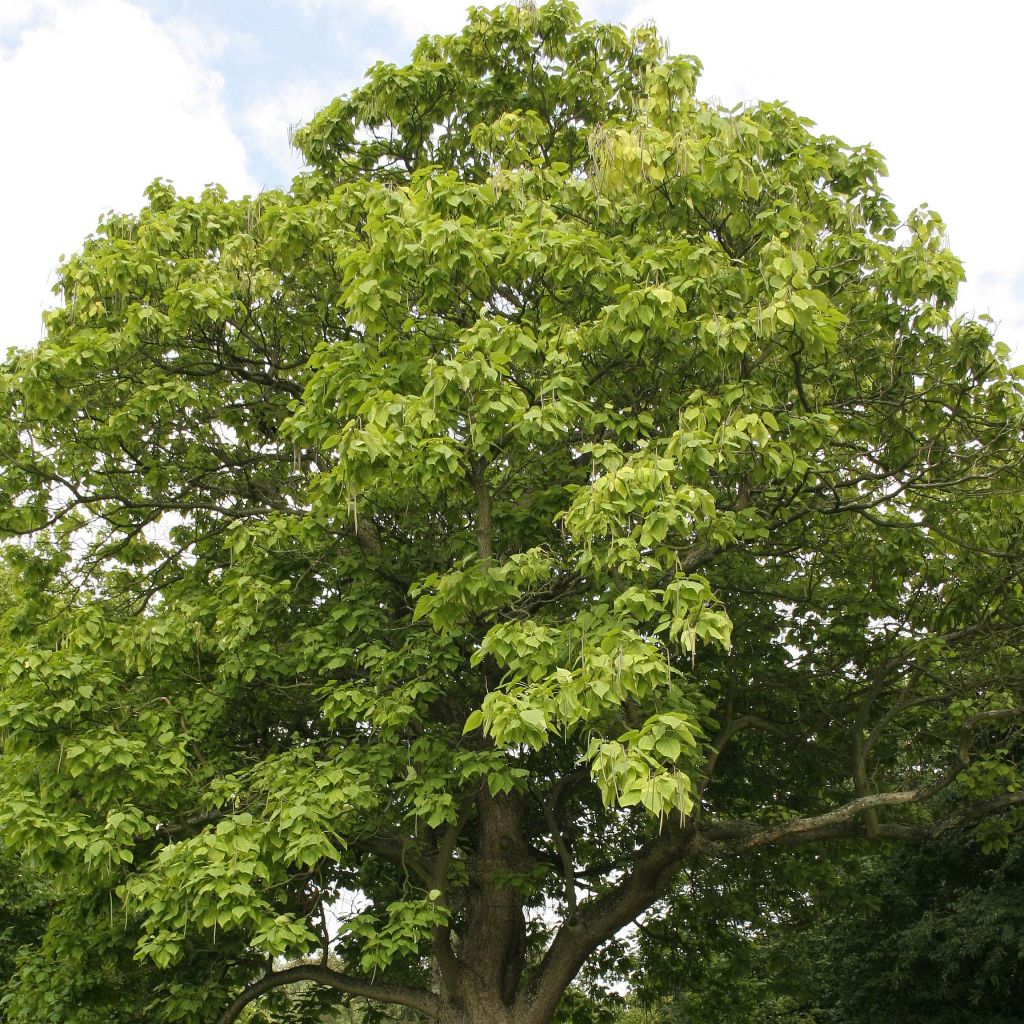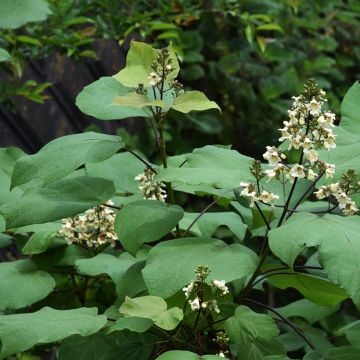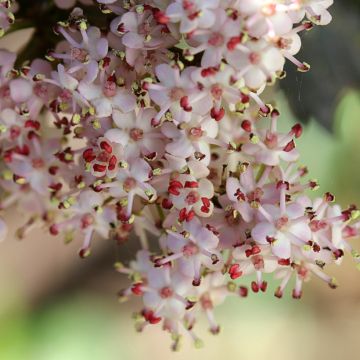

Catalpa bignonioides


Catalpa bignonioides


Catalpa bignonioides


Catalpa bignonioides


Catalpa bignonioides


Catalpa bignonioides


Catalpa bignonioides
View more pictures
Hide images

Thierry P.

June flowering - image 3
Thierry P. • 84 FR
Catalpa bignonioides
Catalpa bignonioides
Indian Bean Tree, Cigar Tree, Southern Catalpa
Hello, I just wanted to report that the tree was delivered with injuries on the trunk. Nevertheless, I have planted it. I hope it won't suffer too much from it. I am attaching some photos of the delivery condition. Best regards
Marie Josée, 09/03/2023
Special offer!
Receive a €20 voucher for any order over €90 (excluding delivery costs, credit notes, and plastic-free options)!
1- Add your favorite plants to your cart.
2- Once you have reached €90, confirm your order (you can even choose the delivery date!).
3- As soon as your order is shipped, you will receive an email containing your voucher code, valid for 3 months (90 days).
Your voucher is unique and can only be used once, for any order with a minimum value of €20, excluding delivery costs.
Can be combined with other current offers, non-divisible and non-refundable.
Home or relay delivery (depending on size and destination)
Schedule delivery date,
and select date in basket
This plant carries a 24 months recovery warranty
More information
We guarantee the quality of our plants for a full growing cycle, and will replace at our expense any plant that fails to recover under normal climatic and planting conditions.
Would this plant suit my garden?
Set up your Plantfit profile →
Description
Catalpa bignonioides, or the Common Catalpa, is a medium-sized tree with a very spread-out, rounded and dense habit. It provides a good shelter from the sun in summer. It has large light green leaves with a somewhat tropical appearance, which serve as a backdrop for its beautiful white flowers in summer and its astonishing bean-like fruit pods. This deciduous tree with no specific requirements is perfect for shading a terrace or a play area, allowing the sunshine through from October until the beginning of May.
Catalpa bignonioides, also known as the Bean Tree or Common Catalpa, is a beautiful tree from the Bignoniaceae family: it is a cousin of beautiful climbers like Campsis, Bignonia, Podranea, and other Tecomaria. Originating from the southeastern United States, it was introduced to Europe in 1726. It is a light-demanding species that appreciates moist soils, tolerates limestone, and is highly resistant to urban pollution. It exhibits rapid growth, dense and branching vegetation, and remarkably large leaves. At the age of 10, this tree will measure between 8 and 15 metres (26 feet 2 inches and 49 feet 2 inches) in height and develop a wide crown of 10 to 15 metres. Its bark is grey-brown and slightly channelled, peeling off over time in small flakes. Its branches are brittle, so it is necessary to protect it from strong winds. Its foliage is deciduous, appearing late in spring and falling quickly in autumn. Its leaves have an elongated heart shape, starting off medium green in spring and summer, then turning yellow in autumn. In July, it produces beautiful clusters of white flowers, highly appreciated by pollinating insects. These are followed by long pods, 20 to 50 cm (7.9 to 19.7 in) in length, green and then brown when ripe. Its shallow root system does not tolerate drought and makes it vulnerable to strong winds. This Catalpa benefits from severe pruning every 2 or 3 years to maintain a dense habit.
The Common Catalpa is suitable for medium to large gardens, but it is not recommended for excessively windy locations. Well-suited for urban environments, it can blend in perfectly in a city garden, either as a standalone shade tree or in combination with the Robinia pseudoacacia 'Umbraculifera', which is better adapted to dry soils.
Catalpa bignonioides in pictures






Plant habit
Flowering
Foliage
Botanical data
Catalpa
bignonioides
Bignoniaceae
Indian Bean Tree, Cigar Tree, Southern Catalpa
North America
Other Catalpa
View all →Planting and care
Plant your Catalpa bignonioides in a sunny location and in a clear space. Be careful not to plant it in a windy area as its wood is brittle, and not too close to the house. It appreciates any type of soil as long as it is moist and deep enough, and provides good drainage; stagnant soils can cause attacks from wood-rotting fungi (such as Armillaria, a parasitic fungus that feeds on tree wood). After planting, water generously to remove any air pockets. In case of drought, water for a few weeks to promote root development.
Planting period
Intended location
Care
Planting & care advice
-
, onOrder confirmed
Reply from on Promesse de fleurs
Similar products
Haven't found what you were looking for?
Hardiness is the lowest winter temperature a plant can endure without suffering serious damage or even dying. However, hardiness is affected by location (a sheltered area, such as a patio), protection (winter cover) and soil type (hardiness is improved by well-drained soil).

Photo Sharing Terms & Conditions
In order to encourage gardeners to interact and share their experiences, Promesse de fleurs offers various media enabling content to be uploaded onto its Site - in particular via the ‘Photo sharing’ module.
The User agrees to refrain from:
- Posting any content that is illegal, prejudicial, insulting, racist, inciteful to hatred, revisionist, contrary to public decency, that infringes on privacy or on the privacy rights of third parties, in particular the publicity rights of persons and goods, intellectual property rights, or the right to privacy.
- Submitting content on behalf of a third party;
- Impersonate the identity of a third party and/or publish any personal information about a third party;
In general, the User undertakes to refrain from any unethical behaviour.
All Content (in particular text, comments, files, images, photos, videos, creative works, etc.), which may be subject to property or intellectual property rights, image or other private rights, shall remain the property of the User, subject to the limited rights granted by the terms of the licence granted by Promesse de fleurs as stated below. Users are at liberty to publish or not to publish such Content on the Site, notably via the ‘Photo Sharing’ facility, and accept that this Content shall be made public and freely accessible, notably on the Internet.
Users further acknowledge, undertake to have ,and guarantee that they hold all necessary rights and permissions to publish such material on the Site, in particular with regard to the legislation in force pertaining to any privacy, property, intellectual property, image, or contractual rights, or rights of any other nature. By publishing such Content on the Site, Users acknowledge accepting full liability as publishers of the Content within the meaning of the law, and grant Promesse de fleurs, free of charge, an inclusive, worldwide licence for the said Content for the entire duration of its publication, including all reproduction, representation, up/downloading, displaying, performing, transmission, and storage rights.
Users also grant permission for their name to be linked to the Content and accept that this link may not always be made available.
By engaging in posting material, Users consent to their Content becoming automatically accessible on the Internet, in particular on other sites and/or blogs and/or web pages of the Promesse de fleurs site, including in particular social pages and the Promesse de fleurs catalogue.
Users may secure the removal of entrusted content free of charge by issuing a simple request via our contact form.
The flowering period indicated on our website applies to countries and regions located in USDA zone 8 (France, the United Kingdom, Ireland, the Netherlands, etc.)
It will vary according to where you live:
- In zones 9 to 10 (Italy, Spain, Greece, etc.), flowering will occur about 2 to 4 weeks earlier.
- In zones 6 to 7 (Germany, Poland, Slovenia, and lower mountainous regions), flowering will be delayed by 2 to 3 weeks.
- In zone 5 (Central Europe, Scandinavia), blooming will be delayed by 3 to 5 weeks.
In temperate climates, pruning of spring-flowering shrubs (forsythia, spireas, etc.) should be done just after flowering.
Pruning of summer-flowering shrubs (Indian Lilac, Perovskia, etc.) can be done in winter or spring.
In cold regions as well as with frost-sensitive plants, avoid pruning too early when severe frosts may still occur.
The planting period indicated on our website applies to countries and regions located in USDA zone 8 (France, United Kingdom, Ireland, Netherlands).
It will vary according to where you live:
- In Mediterranean zones (Marseille, Madrid, Milan, etc.), autumn and winter are the best planting periods.
- In continental zones (Strasbourg, Munich, Vienna, etc.), delay planting by 2 to 3 weeks in spring and bring it forward by 2 to 4 weeks in autumn.
- In mountainous regions (the Alps, Pyrenees, Carpathians, etc.), it is best to plant in late spring (May-June) or late summer (August-September).
The harvesting period indicated on our website applies to countries and regions in USDA zone 8 (France, England, Ireland, the Netherlands).
In colder areas (Scandinavia, Poland, Austria...) fruit and vegetable harvests are likely to be delayed by 3-4 weeks.
In warmer areas (Italy, Spain, Greece, etc.), harvesting will probably take place earlier, depending on weather conditions.
The sowing periods indicated on our website apply to countries and regions within USDA Zone 8 (France, UK, Ireland, Netherlands).
In colder areas (Scandinavia, Poland, Austria...), delay any outdoor sowing by 3-4 weeks, or sow under glass.
In warmer climes (Italy, Spain, Greece, etc.), bring outdoor sowing forward by a few weeks.






















































